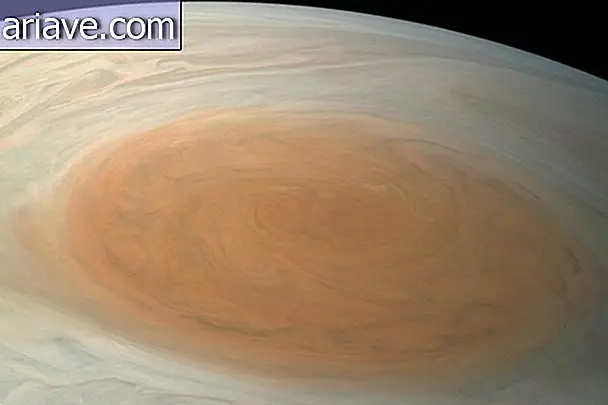Discover 10 Amazing Things You Could Find In Space
Space, the final frontier. Few things arouse the curiosity of the human being as much as the mysteries of the universe. From the middle of the 20th century, man began a series of studies and research on the area of dimensions that border (or are) infinity around our little blue planet. A lot has been discovered and a lot more new questions have been created.
Whenever we look up on a clear night, we ask the same questions: What is there? What occupies all this huge space that surrounds us? What kinds of objects or beings can be out there without a clue? The answers to these questions are still far from being found, but scientists have already been able to discover a lot of interesting or curious things that hang in the not-so-empty void of the universe.
Here are 10 interesting things that we can or could find in space, both natural and items that we ourselves let slip from Earth. Check out the curious relationship below:
1. The Death Star
Let's take it easy. Before you think we are talking about the mighty Death Star in the Star Wars saga, remember that it happened in a galaxy far, far away, but a long time ago. The Death Star we are dealing with here is a “zombie star, ” a huge star who died and became, according to Chandrasekhar's Limit, a white dwarf.
Known officially as WD1145 + 017, the dead star stands towards the Virgo constellation and has reached a very high level of gravity that is killing everything around it: sucking out planets, satellites and other nearby objects. This is because stars are large energy balls that continuously transform hydrogen into helium through the nuclear fusion process. When this hydrogen fuel runs out, the star expands into a red giant.
Depending on the size of the star, it begins to produce carbon until helium runs out, decreasing in size and becoming a white dwarf, a small star and giant mass. This relationship makes its gravity very high and starts to attract all the mass that is close to it. This is the same process of creating a black hole, but from the largest possible stars in the universe.

2. One Lid of a Test Capsule
Officially, Sputnik 1 is considered to be the first human-made object to orbit planet Earth. The satellite was launched on October 4, 1957 by the Soviets and circled the earth for three months before falling. But fans of conspiracy theories vehemently claim that another item managed to overcome terrestrial gravity and fly into space two months before Sputnik: a lid of a test capsule that would store nuclear weapons underground.
It turns out that during the tests, what was supposed to be a controlled explosion was much larger than expected. The explosive's full power was channeled through a tunnel that led to the surface and tore off the metal lid that covered the passage. The object was fired high with a calculated force six times greater than necessary to overcome terrestrial gravity.
Where is this lid? No one knows, no one has seen. Some believe that it was pulverized as it passed through the planet's atmosphere, others think the object did not even go out of orbit, falling and getting lost somewhere in the earth itself. The less skeptical think this lid is wandering through space carrying the proud title of the first artificial object to leave Earth.

3. Golf Balls
The publicity reached the space and took golf balls with it. This was what happened at the ISS, the International Space Station, in 2006, when a commercial from a Canadian golf company led cosmonaut Mikhail Tyurin to throw the little white balls towards Earth. Worse? The scientist missed the shot, even though his target was "only" the entire planet!
In any case, the ball was certainly attracted here by gravity and was sprayed at the entrance of the earth's atmosphere. Prior to the Russian cosmonaut, astronaut Alan Shepard, a member of the Apollo 14 expedition, also fired some balls at an activity on lunar soil. They were all left behind when the team returned to our planet and if no little green man has recovered them, they are still lost in the distant desolation of the moon.

4. Alcohol
Scientists have been able to uncover gigantic clouds of alcohol in our galaxy, even though its irony is called the Milky Way, or "milk path, " to the delight of drunks. The calculated amount of this substance at these accumulation sites is equivalent to 4 x 10 26 pints of beer, those large glasses served in pubs. This is equivalent to 400 setillion doses, or to better understand it, 400, 000, 000, 000, 000, 000, 000, 000, 000 pints of barley juice. Okay or want more?
This whole alcohol in space makes scientists very excited, but not because of the possibility of consuming it, but because it is an organic compound that carries the basic materials to support the creation of life. These clouds are found near places called “star nurseries” and can tell us more about how our universe and everything in it arose billions and billions of years ago.

5. A museum
Unsurprisingly, humans try to send into space all kinds of human production, especially artistic, hoping that it can be intercepted by someone or something at some remote point in the universe, as was done with Voyager, which led to far from Earth a series of images, musical compositions and other works of art.
The history of the Moon Museum follows the same idea, although no one to date has confirmed that it was all a rumor. It is said that a secret mission to carry six small works by artists engraved on a ceramic plate would have taken place in parallel with the works of Apollo 12. According to it was possible to find out, 15 or 19 of these chips were made and one would have traveled aboard the module. moon of Apollo 12 and today would be resting on the lunar surface.
The artists who created the works were Andy Warhol, Robert Rauschenberg, David Novros, John Chamberlain, Claes Oldenburg and Forrest Myers. Myers even claimed that a scientist named Fred Waldhauer would have created the piece, shrinking the designs and printing them on the tiny ceramic plate. One of the mission engineers reportedly placed the object on Apollo 12 and confirmed the mission's success via a telegram.

6. A cloud of little planets
The Oort cloud, also called the Öpik-Oort cloud, would be a spherical cloud of tiny volatile planets that would be located about a light year from the sun. This means that it would be approximately one quarter of the distance from Proxima Centauri, the nearest star to the sun.
The Oort cloud, named after the Dutch astronomer Jan Oort, is believed to comprise two distinct regions: a spherical outer part and a disk-shaped inner part, or Hills cloud. Oort cloud objects would be composed primarily of volatile materials such as ice, ammonia and methane.
The most curious thing about the Oort cloud is that it only exists in theory. Scientists have come up with this idea to justify the origin of all long-term comets, such as Halley, that penetrate our solar system and leave it periodically. It is very likely that with today's advanced space observation technology, we will be able to see if this cloud really exists very soon.

7. Lightning
Storms of all kinds can arise in virtually every corner of the universe, beginning, for example, with the eternal storm that plagues a point of Jupiter, at that very spot that looks like a great spot on the planet. Thus, it was possible to detect the largest electric discharge ever made at a point that is 2 billion light years from Earth.
This kind of lightning storm can happen in places around black holes, because their magnetic fields allow the manifestation of gigantic electric charges.
The storm that generated lightning equivalent to a trillion lightning strikes is about 150, 000 light years in length, longer than the Milky Way itself. The electricity generated in this field would be able to power all cities on Earth for over a millennium, but would probably fry all electrical systems in less than a second.

8. A space suit functioning as a satellite
Lack of what to do in space can create very curious ideas. A group of astronauts from the International Space Station took a little time off from their research and studies and decided to give an old astronaut suit an interesting function: they wanted to turn it into a satellite.
The suit, which costs NASA a good million dollars, was adapted and equipped with some sensors and transmitters to broadcast a radio signal with greetings in five different languages. Named as SuitSat (and nicknamed Mr. Smith by the Americans and Ivan Ivanovich by the Russians), the costume was released from the ISS in 2006, but after three hours of broadcasting, it disappeared. No one knows if it was destroyed in the atmosphere or if it lives well and quiet on some nearby planet today. Mystery!

9. Pee
Undoubtedly, the most expensive pee in the world is made in space. Regardless of how you get rid of astronaut urine, it is always some very expensive option. There is the $ 50, 000 toilet, about $ 200, 000, which through suction and an air lock throws the person's pee into space. Newer models in spacesuits filter and turn urine into drinking water, but at a very expensive cost.
In the past, everything was even more costly: in addition to the process of vacuum peeing requiring careful training, throwing that urine into space inside the spaceships cost NASA some $ 30 million, or about $ 120 million today. When outside controlled environments, pee droplets freeze in the vacuum of space and float in the immensity of the universe.

10. Life
Perhaps the greatest mystery in the history of space exploration, the ultimate proof of life outside our planet may be about to be discovered. Huge oceans of liquid methane have recently been found on Titan, Saturn's largest satellite. It is believed that the medium makes life possible, made of cells, just like Earth, but lives on the basis of methane, not oxygen.
Experiments have shown that beings with methane breathing may exist in this kind of extreme condition. NASA bets everything on the satellite to finally discover the much sought after extraterrestrial life. It may not yet be intelligent life, nor is it the famous little green men, but it would be a huge step towards a greater understanding of our vast Universe.

Space comprises a series of strange objects and items. Comment on TecMundo Forum
Via TecMundo.











